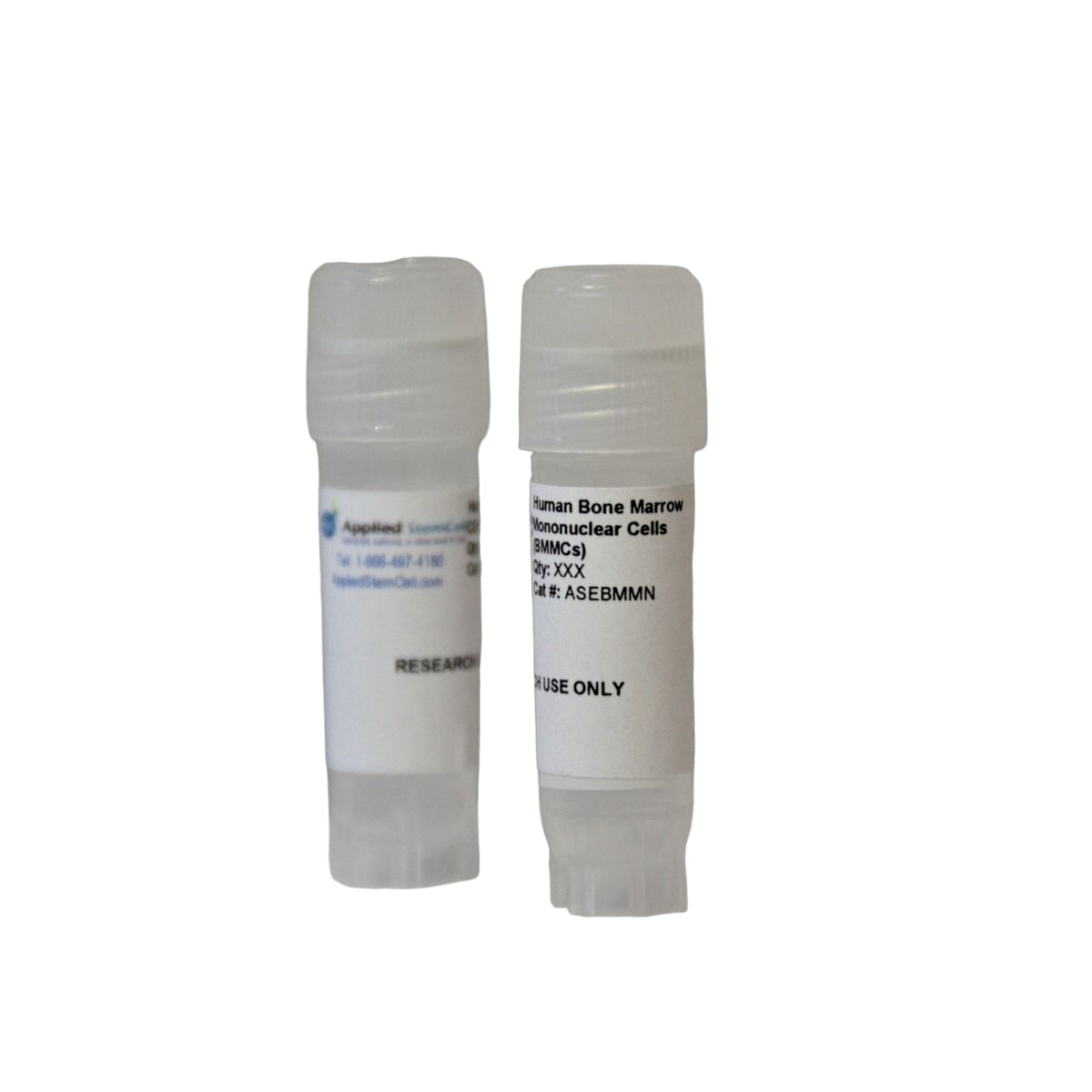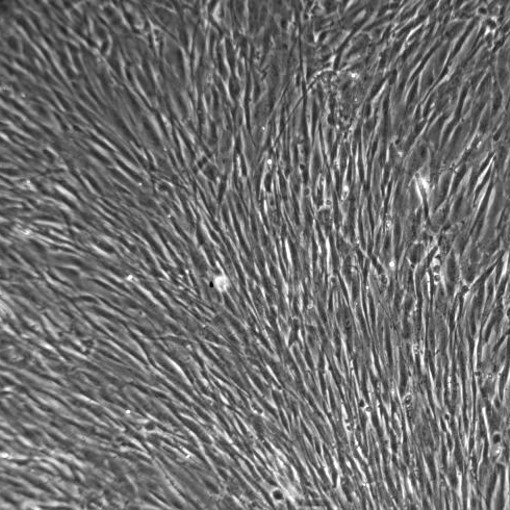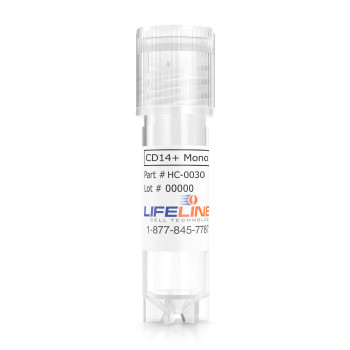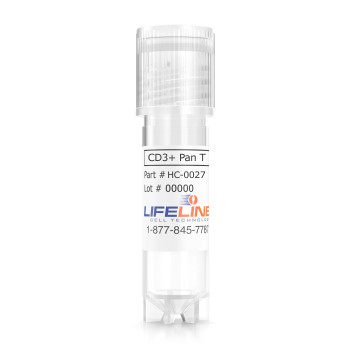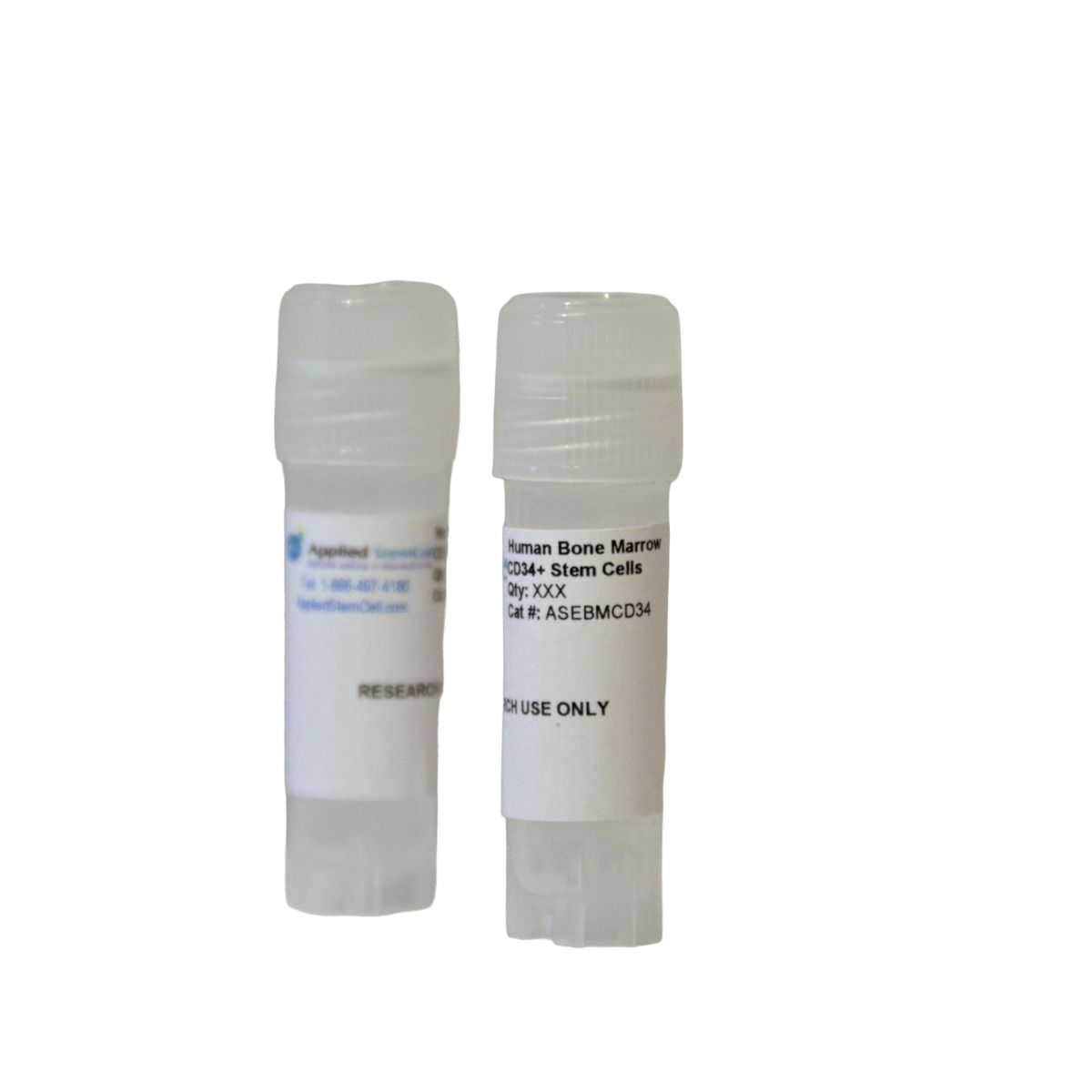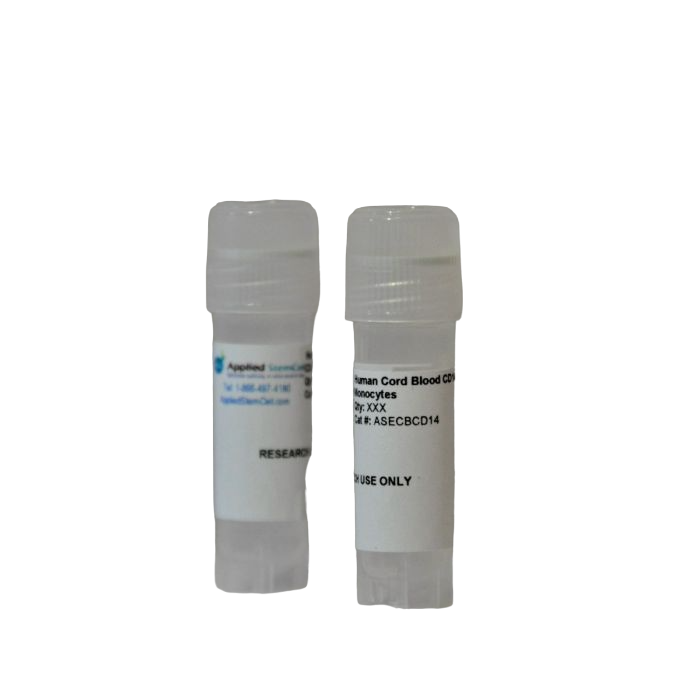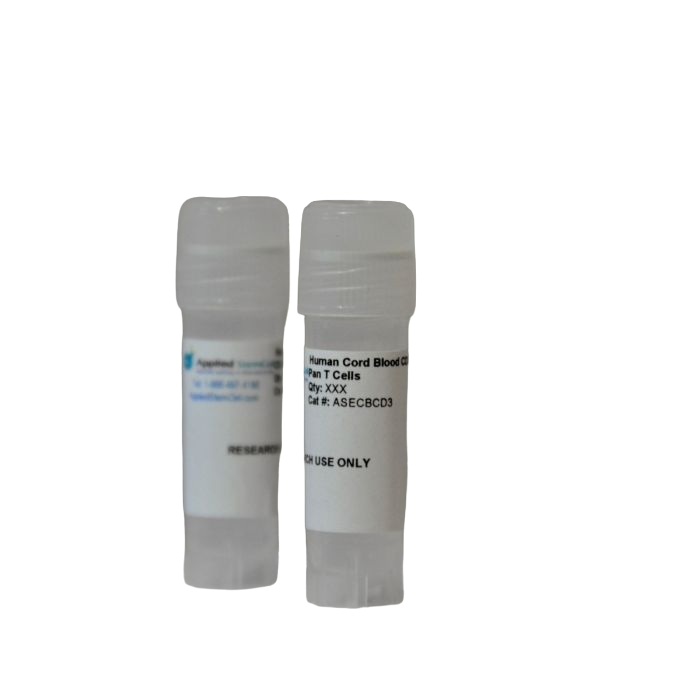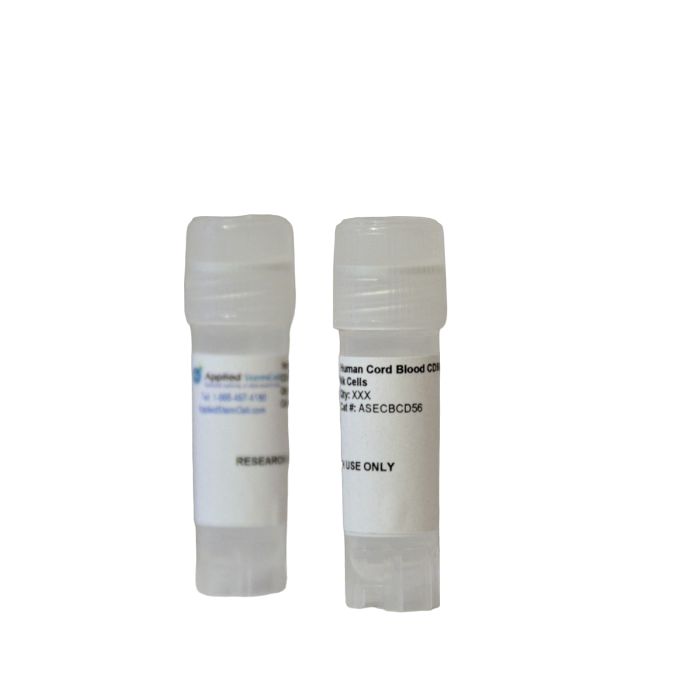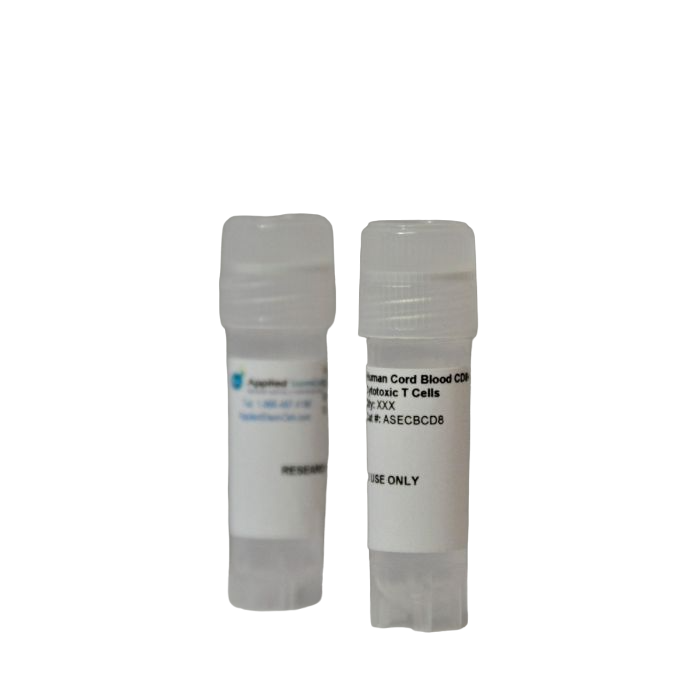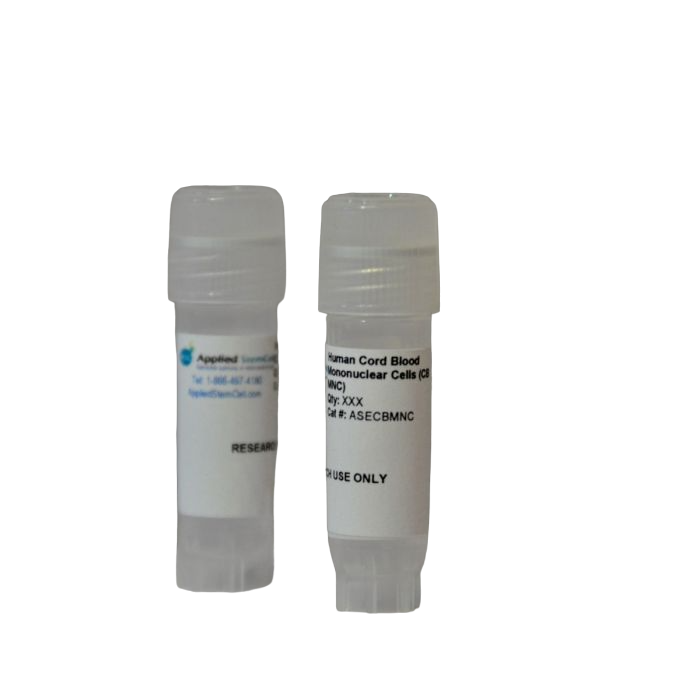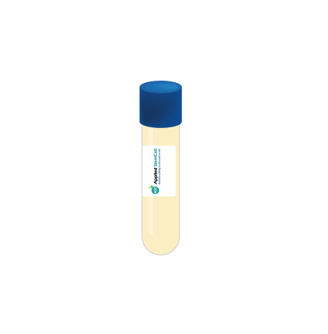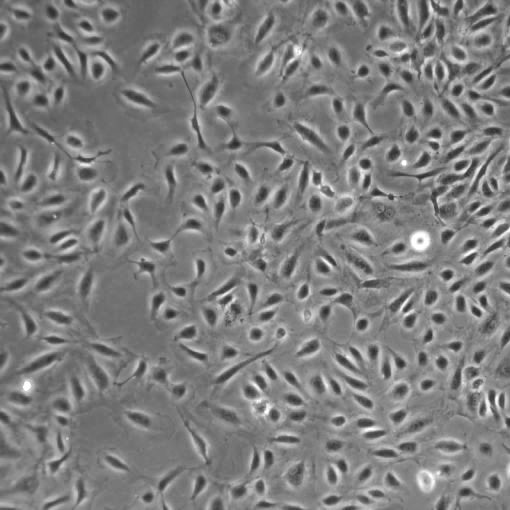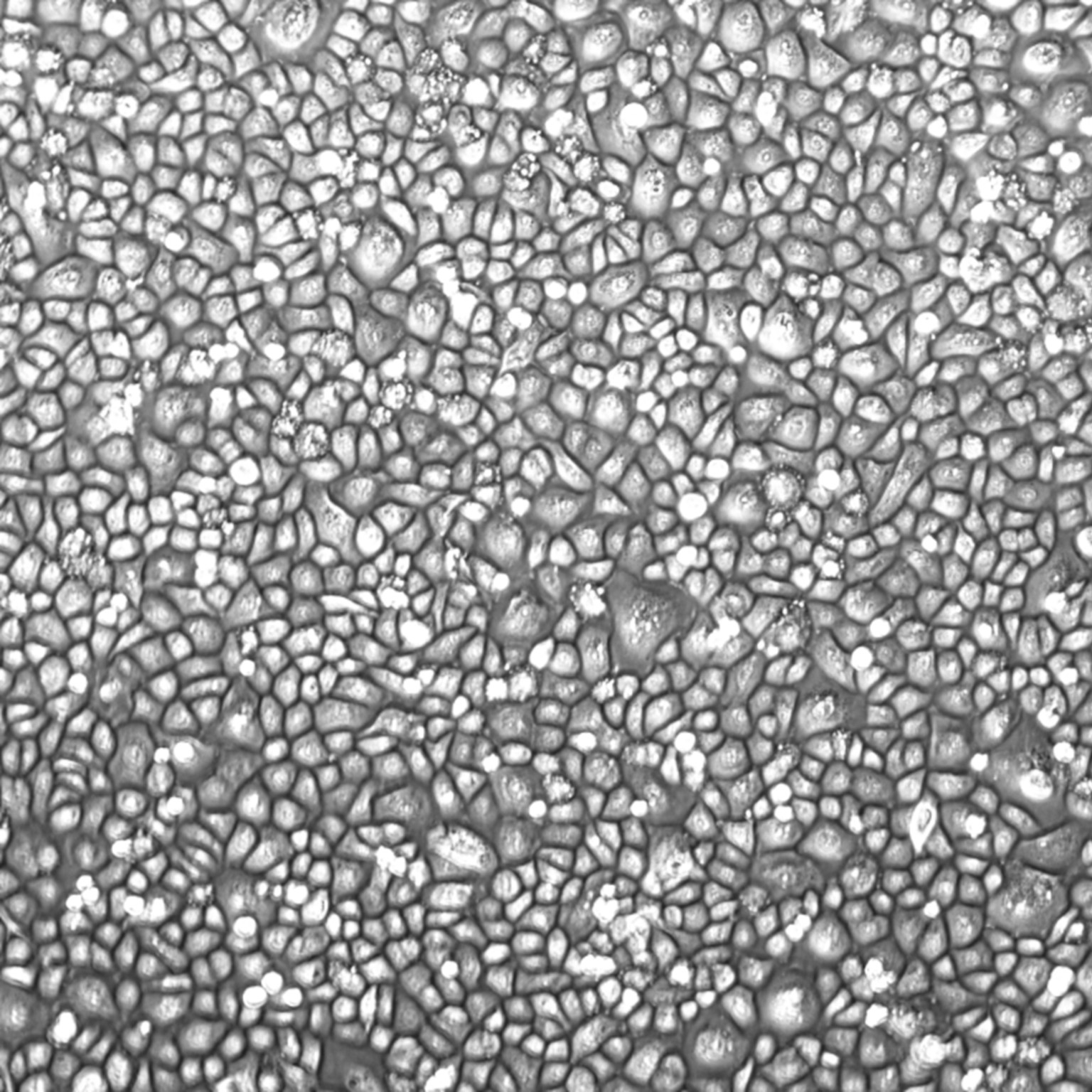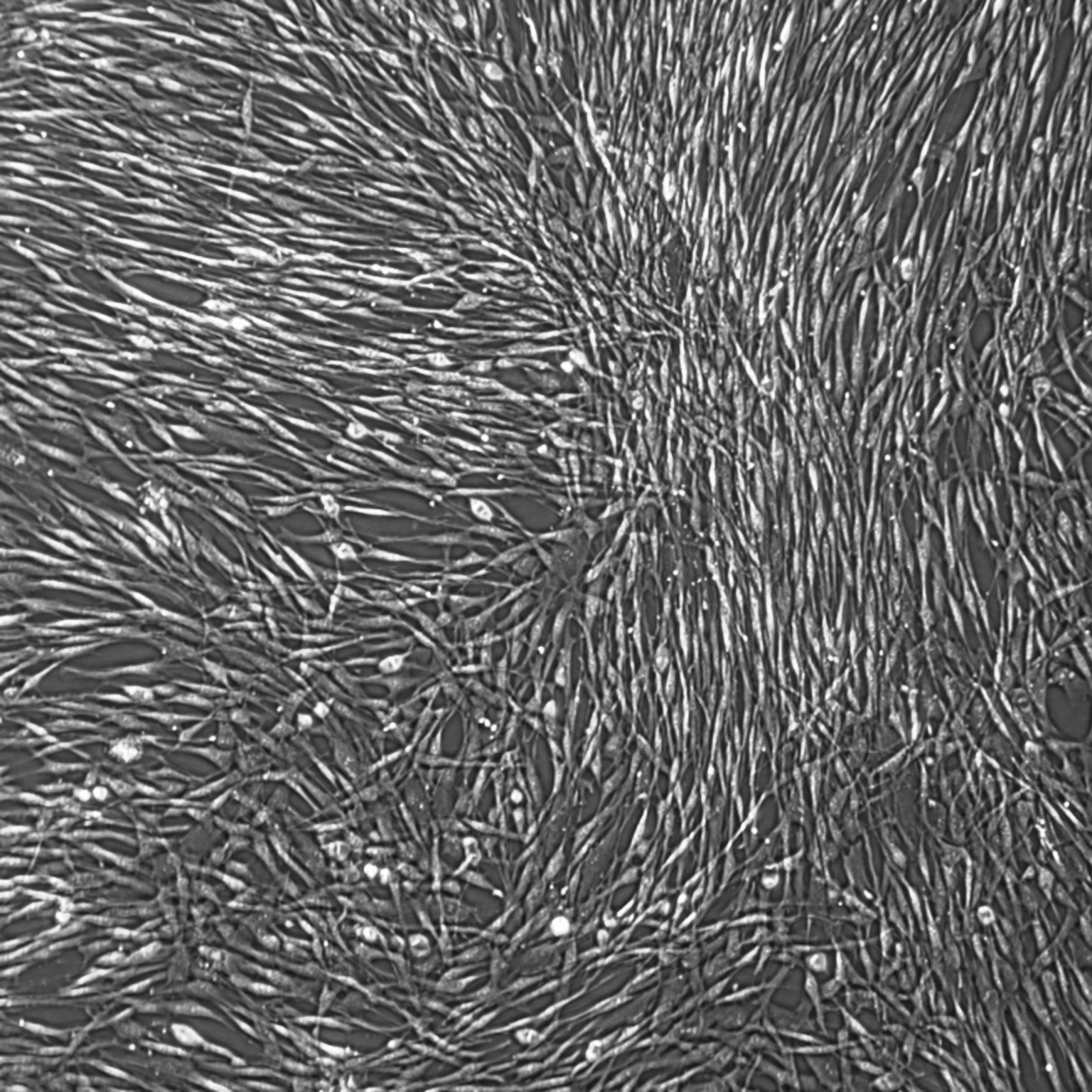Primary Cells & Culture Media
Isolated Primary Cells and selective Cell Culture Media in Experimental Research
Utilizing isolated primary cells in conjunction with carefully optimized cell culture media aims to replicate in vivo conditions, thereby enhancing the physiological relevance of studying cellular behaviors and responses.
Therefore, primary cell culture is the first choice when interested in:
- Disease Modelling and Mechanistic Studies: Isolated primary cells serve as essential models for studying disease mechanisms and pathophysiology. Cultures of healthy and diseased lung epithelial cells (e.g. bronchial/tracheal, small airway), or immune cells, among others, enable researchers to elucidate the underlying molecular pathways driving diseases such as pathogenesis and dysfunction of epithelial tissues and autoimmune conditions.
- Drug Discovery and Development Studies: Primary cell cultures are invaluable tools in drug discovery, allowing researchers to assess the efficacy, toxicity, and pharmacological properties of candidate compounds in a biologically relevant context.
Primary cell culture systems provide researchers with more physiologically relevant models for studying complex biological processes, disease mechanisms, and drug responses.
3D Culture Models: From Organoids, Co-Culture Systems and Organ-on-a-Chip Technology
Organoid and spheroid cultures as well as co-culture systems represent advanced three-dimensional models that mimic the complexity of tissues and organs in vitro.These approaches result in more complex and physiologically relevant systems compared to traditional monolayer cultures, allowing researchers to study cellular interactions, tissue development, disease mechanisms, and drug responses within a setting that closely mimics in vivo conditions.
Three-dimensional, multilineage human skin models—an area where CellSystems® has historically acquired extensive experience—serve as a basis for the reproduction and study of various skin diseases, as well as their treatment in vitro. Furthermore, these models have significantly advanced research in critical areas such as wound healing, and burn therapy. Additionally, the emergence of Organ-on-a-Chip Technology has provided captivating insights into the complex microenvironment and physiological responses of human organs in vitro. In a recent publication, primary cells, culture media, and extracellular matrix proteins were utilized in a microfluidic two-channel co-culture to shed light on the dynamics of the vaginal microbiome for understanding female reproductive tract health and disease.
For a comprehensive overview about our extracellular matrices, adhesion molecules and bioprinting materials, visit Matrix Proteins & Bioprinting.
-
Human Bone Marrow Mononuclear Cells (BMMCs) 5M
Cat.-Nr: ASEBMMN-C5M
If you’d like to receive more information about this product, please send us a short message using the “Request Information”-Button below, and... Read More
-
Human Bronchial Tracheal Smooth Muscle Cells
Cat.-Nr: FC-0059
Lifeline® Normal Human Bronchial Tracheal Smooth Muscle Cells (HBTSMC), when grown in Lifeline® VascuLife® SMC Medium, provide an ideal low serum... Read More
-
Human Cardiac Fibroblasts
Cat.-Nr: FC-0060
Lifeline® Normal Human Cardiac Fibroblasts provide an ideal cell system to establish serum-free human feeder layers for human embryonic stem cell... Read More
-
Human Cardiac Microvascular Endothelial Cells
Cat.-Nr: FC-0053
Lifeline® Normal Human Cardiac Microvascular Endothelial Cells, when grown in Lifeline® VascuLife® VEGF-Mv Medium, provide an ideal low-serum... Read More
-
Human CD14+ Monocytes from Leukapheresed Peripheral Blood
Cat.-Nr: HC-0030
Human CD14+ Monocytes provide an ideal culture model for the study of immunology. These human CD14+ Monocytes are purified... Read More
-
Human CD19+ B-Cells
Cat.-Nr: HC-0031
Lifeline® Human CD19+ B Cells provide an ideal culture model for the study of immunology. These normal human CD19+ B Cells are purified from... Read More
-
Human CD3+ Pan T-Cells (10M)
Cat.-Nr: HC-0027
Human CD3+ Pan T Cells are cryopreserved directly after isolation to ensure optimal phenotype and the highest viability. Human CD3+ Pan T Cells are... Read More
-
Human CD3+ Pan T-Cells (5M)
Cat.-Nr: HC-0026
Human CD3+ Pan T Cells provide an ideal culture model for the study of immunology, immunotherapy, autoimmunity, cancer, cell-based therapies, and... Read More
-
Human CD3+ T-Cells - Complete Kit (10M)
Cat.-Nr: LL-0077
The CD3+ Pan T Cell 10M System Complete Kit includes: Human CD3+ Pan T Cells with 10 x 106 cells per vial and RPMI 1640-FBS Medium Complete Kit with... Read More
-
Human CD3+ T-Cells - Complete Kit (5M)
Cat.-Nr: LL-0076
The CD3+ Pan T Cell 5M System Complete Kit includes: Human CD3+ Pan T Cells with 5 x 106 cells per vial and RPMI 1640-FBS Medium Complete Kit with... Read More
-
Human CD34-depleted Bone Marrow Mononuclear Cells - Single Donor 100M
Cat.-Nr: ASEBMCD34-deplete
Bone Marrow Mononuclear cells (BMMCs) undergo immunomagnetic isolation to deplete CD34+ cells. This preparation encompasses non-CD34+ cells,... Read More
-
Human CD34+ Cord Blood Stem / Progenitor Cells (Single Donor) 1M
Cat.-Nr: ASECBCD34-C1M
Human Cord Blood CD34+ Stem / Progenitor Cells Frozen, single Donor If you’d like to receive more information about this product, please send us... Read More
-
Human CD4+ T-Cells
Cat.-Nr: HC-0028
Lifeline® Human CD4+ T Cells provide an ideal culture model for the study of immunology. These human CD4+ T Cells are purified from leukapharesed... Read More
-
Human CD8+ T-Cells
Cat.-Nr: HC-0029
Lifeline® Human CD8+ T Cells provide an ideal culture model for the study of immunology. Human CD8+ T Cells are purified from leukapharesed... Read More
-
Human Cervical Epithelial Cells
Cat.-Nr: FC-0080
Lifeline® Normal Human Cervical Epithelial Cells (HCxEC), when grown in Lifeline® ReproLife™ CX Medium, provide an ideal serum-free culture model... Read More
-
Human Cord Blood CD14+ Monocytes 5M
Cat.-Nr: ASECBCD14-C5M
If you’d like to receive more information about this product, please send us a short message using the “Request Information”-Button below, and... Read More
-
Human Cord Blood CD19+ B Cells 2.5M
Cat.-Nr: ASECBCD19-C2.5M
If you’d like to receive more information about this product, please send us a short message using the “Request Information”-Button below, and... Read More
-
Human Cord Blood CD19+ B Cells 5M
Cat.-Nr: ASECBCD19-C5M
If you’d like to receive more information about this product, please send us a short message using the “Request Information”-Button below, and... Read More
-
Human Cord Blood CD3+ Pan T Cells 10M
Cat.-Nr: ASECBCD3-C10M
If you’d like to receive more information about this product, please send us a short message using the “Request Information”-Button below, and... Read More
-
Human Cord Blood CD3+ Pan T Cells 20M
Cat.-Nr: ASECBCD3-C20M
If you’d like to receive more information about this product, please send us a short message using the “Request Information”-Button below, and... Read More
-
Human Cord Blood CD34+ Stem / Progenitor Cells (Single Donor) 0.5M
Cat.-Nr: ASECBCD34-C0.5M
CD34+ stem cells are multipotent cells that can be found in human umbilical cord blood. These cells have the capacity to differentiate to all blood... Read More
-
Human Cord Blood CD34+ Stem & Progenitor Cells (Mixed Donor) 0.5M
Cat.-Nr: ASECBCD34mix-C0.5M
CD34+ stem cells are multipotent cells that can be found in human umbilical cord blood. These cells have the capacity to differentiate to all blood... Read More
-
Human Cord Blood CD34+ Stem & Progenitor Cells (Mixed Donor) 1M
Cat.-Nr: ASECBCD34mix-C1M
CD34+ stem cells are multipotent cells that can be found in human umbilical cord blood. These cells have the capacity to differentiate to all blood... Read More
-
Human Cord Blood CD34+ Stem & Progenitor Cells (Mixed Donor) 5M
Cat.-Nr: ASECBCD34mix-C5M
CD34+ stem cells are multipotent cells that can be found in human umbilical cord blood. These cells have the capacity to differentiate to all blood... Read More
-
Human Cord Blood CD4+/ CD45RA+ Naive T Cells 10M
Cat.-Nr: ASECBCD4-45RA-C10M
If you’d like to receive more information about this product, please send us a short message using the “Request Information”-Button below, and... Read More
-
Human Cord Blood CD4+/ CD45RA+ Naive T Cells 15M
Cat.-Nr: ASECBCD4-45RA-C15M
If you’d like to receive more information about this product, please send us a short message using the “Request Information”-Button below, and... Read More
-
Human Cord Blood CD4+/ CD45RA+ Naive T Cells 5M
Cat.-Nr: ASECBCD4-45RA-C5M
If you’d like to receive more information about this product, please send us a short message using the “Request Information”-Button below, and... Read More
-
Human Cord Blood CD56+ NK Cells 1M
Cat.-Nr: ASECBCD56-C1M
CD56+ Cord Blood Cells are isolated by positive selection of CD56-expressing cells from Cord Blood. If you’d like to receive more information... Read More
-
Human Cord Blood CD8+ Cytotoxic T Cells 5M
Cat.-Nr: ASECBCD8-C5M
If you’d like to receive more information about this product, please send us a short message using the “Request Information”-Button below, and... Read More
-
Human Cord Blood Depleted of CD34+ Stem / Progenitor Cells (Single Donor) 100M
Cat.-Nr: ASECBCD34-deplete
If you’d like to receive more information about this product, please send us a short message using the “Request Information”-Button below, and... Read More
-
Human Cord Blood Mononuclear Cells (CB MNC)
Cat.-Nr: ASECBMNC-C200M
If you’d like to receive more information about this product, please send us a short message using the “Request Information”-Button below, and... Read More
-
Human Cord Blood Mononuclear Cells (CB MNC) 10M
Cat.-Nr: ASECBMNC-C10M
If you’d like to receive more information about this product, please send us a short message using the “Request Information”-Button below, and... Read More
-
Human Cord Blood Mononuclear Cells (CB MNC) 150M
Cat.-Nr: ASECBMNC-C150M
If you’d like to receive more information about this product, please send us a short message using the “Request Information”-Button below, and... Read More
-
Human Cord Blood Mononuclear Cells (CB MNC) 50M
Cat.-Nr: ASECBMNC-C50M
If you’d like to receive more information about this product, please send us a short message using the “Request Information”-Button below, and... Read More
-
Human Cord Blood Plasma 10ML
Cat.-Nr: ASEFC-001-C10
If you’d like to receive more information about this product, please send us a short message using the “Request Information”-Button below, and... Read More
-
Human Corneal Epithelial Cells
Cat.-Nr: FC-0029
Lifeline® normal Human Corneal Epithelial Cells (HCEC), when grown in Lifeline® OcuLife™ Medium, provide an ideal serum-free culture model for... Read More
-
Human Coronary Artery Endothelial Cells - CAEC
Cat.-Nr: FC-0032
Lifeline® Normal Human Coronary Artery Endothelial Cells (HCAEC), when grown in Lifeline® VascuLife® Medium, provides an ideal culture model, with... Read More
-
Human Coronary Artery Smooth Muscle Cells - CASMC
Cat.-Nr: FC-0031
Lifeline® normal Human Coronary Artery Smooth Muscle Cells (HCASMC), when grown in VascuLife® SMC Medium, provide an ideal low serum (5%) culture... Read More
-
Human Dermal Microvascular Endothelial Cells – Adult
Cat.-Nr: FC-0039
Lifeline® normal Human Microvascular Endothelial Cells – Adult, when grown in VascuLife® VEGF-Mv Medium, provide an ideal low-serum culture... Read More
-
Human Diseased Bronchial/Tracheal Epithelial Cells
Cat.-Nr: FC-0103
Diseased Human Bronchial/Tracheal Epithelial Primary Cells — Cystic Fibrosis. Lifeline® Human Bronchial/Tracheal Epithelial Cells, when grown in... Read More
-
Human Diseased Bronchial/Tracheal Epithelial Cells P0
Cat.-Nr: FC-0035
Lifeline® Normal Human Bronchial/Tracheal Epithelial Cells (HBTEC), when grown in Lifeline® BronchiaLife™ Medium, provide an ideal serum-free... Read More
-
Human Endometrial Uterine Epithelial Cells
Cat.-Nr: FC-0078
Lifeline® Normal Human Endometrial (Uterine) Epithelial Cells, when grown in Lifeline® ReproLife™ Medium, provide an ideal serum-free culture... Read More
-
Human Epidermal Keratinocytes - 10-Donor Pool
Cat.-Nr: FC-0064
Lifeline® normal Human Epidermal Keratinocytes (HEK), when grown in Lifeline® DermaLife K Medium, provide an ideal serum-free culture model, for... Read More
-
Human Fallopian Tube Epithelial Cells
Cat.-Nr: FC-0081
Lifeline® Normal Human Fallopian Tube Epithelial Cells , when grown in Lifeline® ReproLife™ Medium, provide an ideal serum-free culture model for... Read More
-
Human Gingival Fibroblasts
Cat.-Nr: FC-0095
Lifeline® normal Human Gingival Fibroblasts provide an ideal cell system to establish serum free human feeder layers for human embryonic stem cell... Read More
-
Human Iliac Artery Endothelial Cells
Cat.-Nr: FC-0028
Lifeline® Iliac Artery Endothelial cells, when grown in Lifeline® VascuLife ® culture medium, provide a low-serum culture ideal for the study of... Read More
-
Human Lobar Bronchial Epithelial Cells
Cat.-Nr: FC-0054
Normal Human Lobar Bronchial Epithelial Cells provide an ideal model for the studies of toxicity, cystic fibrosis, asthma, pathogenesis, pharmacology... Read More
-
Human Lung Fibroblast Cells
Cat.-Nr: FC-0049
Lifeline® normal Human Primary Lung Fibroblasts provide an ideal cell system to: Study wound healing, toxicology, cancer, or basic cell... Read More
-
Human Lung Smooth Muscle Cells
Cat.-Nr: FC-0046
Lifeline® normal Human Lung Smooth Muscle Cells, when grown in VascuLife® SMC Medium, provide an ideal culture model for the study of angiogenesis,... Read More
-
Human Mammary Epithelial Cells, Female
Cat.-Nr: FC-0065
Lifeline® normal Human Mammary (Breast) Epithelial Cells (HMEC) – female, when grown in Lifeline® MammaryLife™ Medium, provide an ideal... Read More

